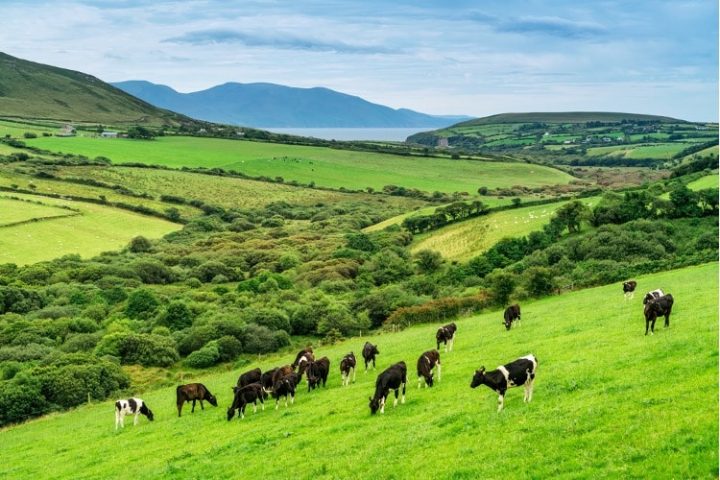
A plan under consideration by the Irish government calls for 200,000 cows to be culled over three years in a bid to reduce greenhouse-gas emissions from the agricultural sector to address so-called climate change. The Irish government estimates the plan would cost €600 million ($641 million) and would represent a substantial reduction of livestock on the Emerald Isle.
The €600 million would mainly go to reimburse farmers for the destruction of their cows. The Irish Ministry of Agriculture estimates that €5,000 per culled cow would be a fair compensation.
Like the rest of the European Union, Ireland is striving to become “carbon neutral” or “net zero” by 2050 in an effort to keep global temperatures from rising. Climate hysterics insist that livestock agriculture and the associated methane emissions is a major culprit in rising temperatures. The cull number has been gleaned from Department of Agriculture documents received by the Ireland-based Independent.
The plan to cull the Irish cow herd would appear to nullify statements made by Irish Minister of Agriculture Charlie McConalogue at the end of 2022.
“All measures will be voluntary and aimed at supporting our farmers to continue to produce world-class food while also diversifying income streams through tillage, energy generation and forestry,” McConalogue said of 2023 climate plans.
The culling of Ireland’s cows was a hot topic in the summer of 2022.
“In Ireland, cattle outnumber people and agriculture accounts for over 37 per cent of CO2 emissions. Ireland also has the highest methane emissions per capita of all EU member states, with much of this due to beef production,” EuroNews noted in August.
Meanwhile, climate fanatics insist that it’s far past time that the agricultural sector be forced to contribute to emissions reductions.
“The time for talking is finally over, it’s time for a relentless focus now on delivery, delivery, delivery,” said Oisín Coghlan, the director of Friends of the Earth Ireland.
Industry insiders in Ireland are quick to acknowledge the reality of climate change, but say that more research must be done prior to gutting cattle herds.
“We should be investing in an infrastructure that can deliver from a scientific perspective. And we know low emissions are better, and we should be continuing to invest in further science and research because that’s absolutely critical as we move forward,” said Pat McCormack, the president of the Irish Creamery Milk Suppliers Association.
“If there is a scheme, it needs to be a voluntary scheme. That’s absolutely critical because there’s no point in culling numbers from an individual who has borrowed on the back of a huge financial commitment on the back of achieving a certain target that’s taken from under him,” McCormack added.
In 2021, a government report claimed that in order to properly address the emissions from Ireland’s cows, the herd would have to be reduced by approximately 1.3 million cattle. So, the announced culling of 200,000 is likely only a beginning.
Under the government’s current climate plan, the agricultural industry is expected to reduce emissions by 25 percent by 2030. Farmers in Ireland, like those in the Netherlands and other agricultural areas in the EU, have been outraged by the emissions targets and claim they will be put out of business by the unrealistic ambitions of their governments.
“This is a potentially devastating blow for Irish farming and the rural economy,” said Tim Cullinan, the head of the Irish Farmers’ Association (IFA).
Irish farmers are also upset because the same European Union that is now insisting that they reduce milk and beef production was pushing them to ramp up production as late as 2015. The earlier push for more production caused many farmers to invest heavily in new equipment and more cows. Previously, production quotas had hampered growth in the agricultural industry.
“After more than 30 years of being constrained by milk production caps, the policy change led to increased output by Irish dairy farmers, who invested heavily in expansion,” a EuroNews article noted.
But now, after being pushed to increase production, those same farmers are being told their cows and milk production are bad for the planet and need to be decreased.
The tactics being employed against Ireland’s farmers are similar to the ones that farmers in the Netherlands have been facing for the past two years. Those tactics have resulted in an angry agricultural sector, with that anger erupting into protests last year.
While the Irish government has not yet officially announced a culling of the cattle herd in the nation, or whether that culling would be voluntary or forced, the prevailing winds of the climate debate in the European Union would suggest that, like it or not, it’s on the way, a continuation of the globalist war against farmers.




